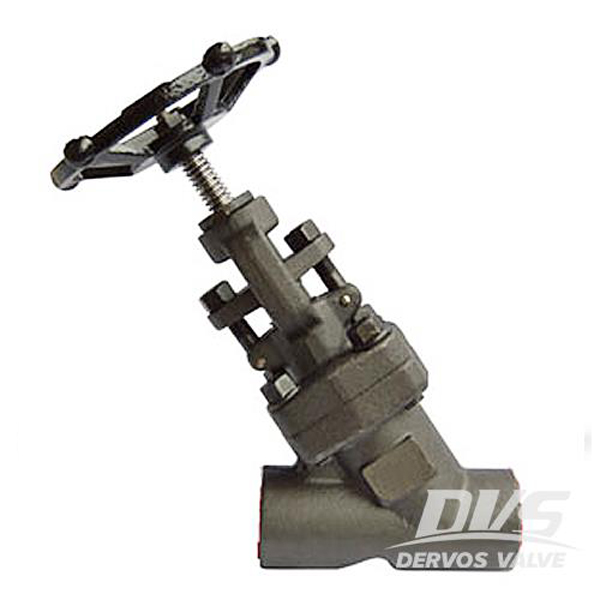Payment:
30% T/T When Order, 70% T/T Before ShipmentProduct Origin:
ChinaColor:
CustomizationShipping Port:
Shanghai ChinaLead Time:
30~60 days Ex Works after order confirmationMaterial:
Forged Steel Globe Valve A105NMethod of Operation:
Handwheel Globe ValveDesigned with 800 LB sw end, the 2 inch globe valve features in plug disc, bolted bonnet, and y type structure. The handwheel operated globe valve is made of forged steel body and stainless steel trim.
Quick Detail
|
Type |
Globe Valve |
|
Size |
2'' |
|
Pressure |
ANSI 800 |
|
Structure |
Y Type, Y Pattern, Bolted Bonnet |
|
ConnectionType |
SW |
|
Operation |
Handwheel Operated |
|
Design Code |
API 602 |
|
Face to Face |
ASME B16.10 |
|
Connection Standard |
ASME B16.11 |
|
Pressure & Temperature |
ASME B16.34 |
|
Test & Inspection Standard |
API 598 |
|
Body Material |
ASTM A105 |
|
ApplicableTemperature |
-29℃~+425℃ |
|
Application |
Water, Oil, Gas |
Related Knowledge
What is the main reason to use Y-pattern globe valve?
A Y type globe is designed with 45° between seat and stem. In other words, the flow will remain straight linear from inlet to outlet ports.Compared to staight pattern globe valve, the y pattern globe valve reduce the flow resistance and pressure drop. This kind of y pattern globe valve is well suited for high pressures and severe application.

FAQ
1. How long have you been in business and how long have you producing valves?
We have been in valve exporting industry for more than 10 years since foundation in 2008. Our business has expanded tremendously to five continents all around the world.
2. What are your main products and their advantages?
Our main products include gate, globe, check, ball, butterfly, plug valves and strainers, available in different materials, sizes and pressure, which are widely used in various industries.
3. Does Xiamen Dervos Valves Industry Co., Ltd. make products for other companies?
Yes, of course. We have a reference list with customer information like country, product type, order volume and some even with project names.
If you are interested in our products and want to know more details,please leave a message here,we will reply you as soon as we can.